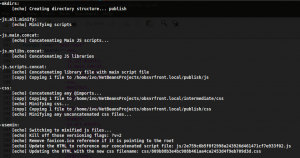A little making of history from duckduckgo search engine.
http://www.gabrielweinberg.com/blog/2011/12/duckduckgo-used-to-run-out-of-my-basement.html
LinkedIn node.js performance tricks
http://engineering.linkedin.com/nodejs/blazing-fast-nodejs-10-performance-tips-linkedin-mobile
introducing PHP’s composer
http://nelm.io/blog/2011/12/composer-part-1-what-why/
promoting PHP’s composer
http://nelm.io/blog/2011/12/composer-part-2-impact/
node.js and PHP
http://bergie.iki.fi/blog/dnode-make_php_and_node-js_talk_to_each_other/
JavaScript API for zooming
http://lab.hakim.se/zoom-js/
Gadget: little printer
http://vimeo.com/32796535
jQuery Animations with automatic CSS3 transitions when possible
http://playground.benbarnett.net/jquery-animate-enhanced/
Batman.js is a framework for building rich web applications with CoffeeScript or JavaScript.
http://batmanjs.org/
some HTTP-Status Cats
http://www.flickr.com/photos/girliemac/6508022985/in/set-72157628409467125
